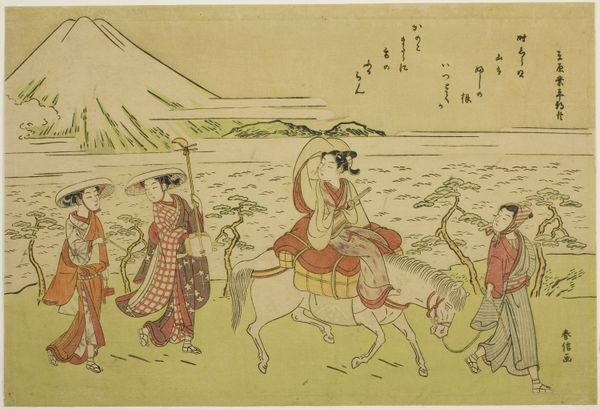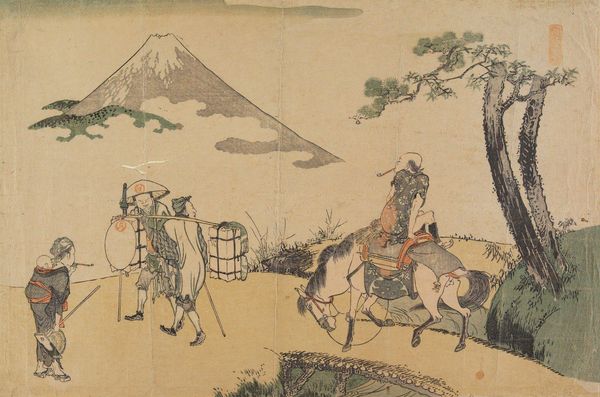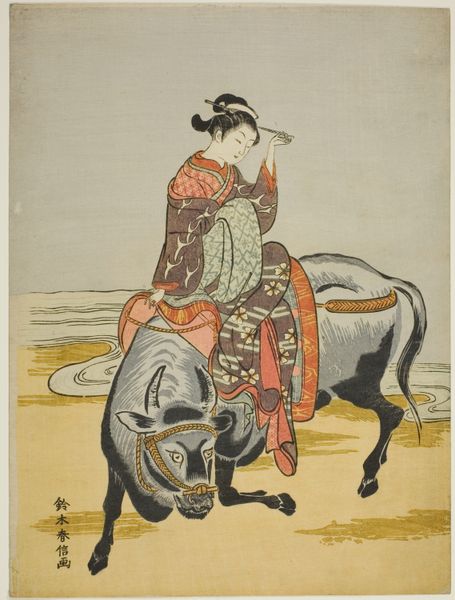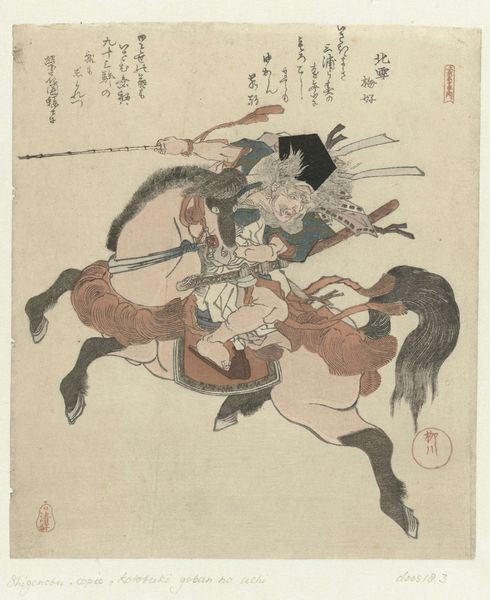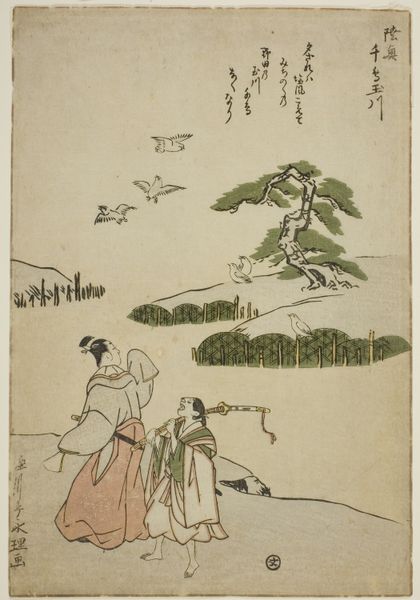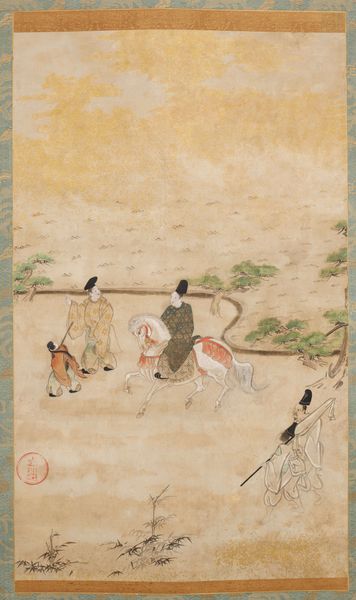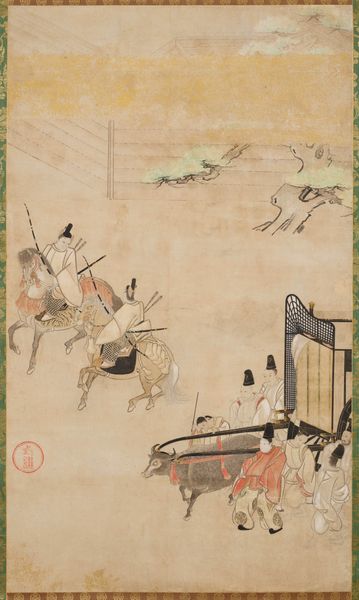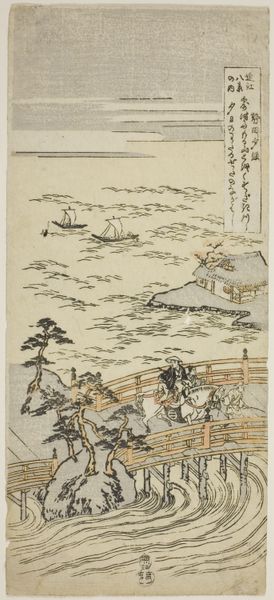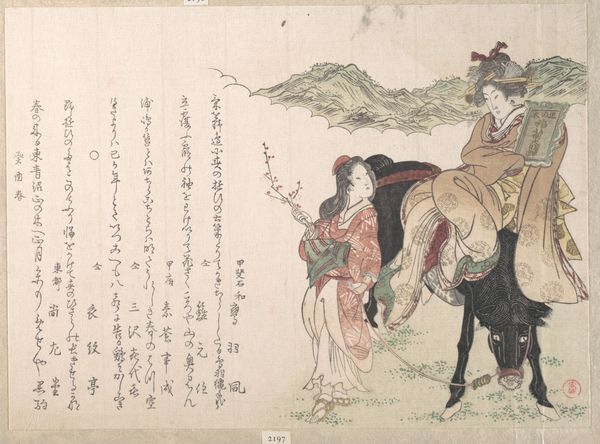
print, ink, woodblock-print
# print
#
asian-art
#
landscape
#
ukiyo-e
#
figuration
#
ink
#
woodblock-print
Dimensions: 8 3/4 × 6 1/4 in.
Copyright: Public Domain
Curator: This is Kitao Shigemasa’s woodblock print, "Crossing the Bridge at Sano," dating back to around 1774. It's currently held in the collection of The Art Institute of Chicago. Editor: Brrr, I feel the chill just looking at it! The colors are muted, everything seems dusted with snow, and the figures are hunched against the cold. It’s all very quiet and still, save for the suggestion of rushing water. Curator: Ukiyo-e prints like this one were extremely popular among the merchant class of Edo-period Japan, often depicting scenes of daily life, landscapes, or, most famously, courtesans and actors. Shigemasa was instrumental in shifting the focus of Ukiyo-e towards more refined, elegant figures. Editor: That aristocratic figure on horseback certainly stands out. There’s a delicate refinement in his posture and the intricate patterns of his robe. It feels as though the figures alongside the horse, by comparison, become secondary, almost absorbed into the landscape. Curator: And yet, consider the context of its creation and the art's popularity within a specific social class. While it may seem to depict a straightforward journey, it also showcases the status and power associated with such mobility during the Edo period. This was a period of strict social hierarchies. The ability to travel, particularly in such a manner, would have been a powerful statement. Editor: Absolutely, the landscape seems secondary only at first glance. It is not some picturesque backdrop, but rather seems to press in on the characters as if to create a physical and social enclosure around their interaction. Also, is it just me, or is there something melancholic about the poem inscribed on the print? As if that rider is moving towards an unknown fate and is weighted down by worries. Curator: That inscription and its poetic melancholy add another layer of sophistication, aligning the print with classical artistic and literary traditions that would elevate the perceived refinement and artistry associated with the ukiyo-e genre as a whole. The prints circulated and had a great reception, largely because they mixed scenes of leisure, beauty and contemporary life with strong references to tradition and power structures. Editor: It really is more than just a pretty picture, isn’t it? Layers of social meaning under a veneer of quiet winter beauty! I’ll never look at a simple bridge the same way again. Curator: Indeed. These prints offer us a window into the complex world of Edo-period Japan, where art, commerce, and social dynamics intertwined in fascinating ways.
Comments
No comments
Be the first to comment and join the conversation on the ultimate creative platform.
